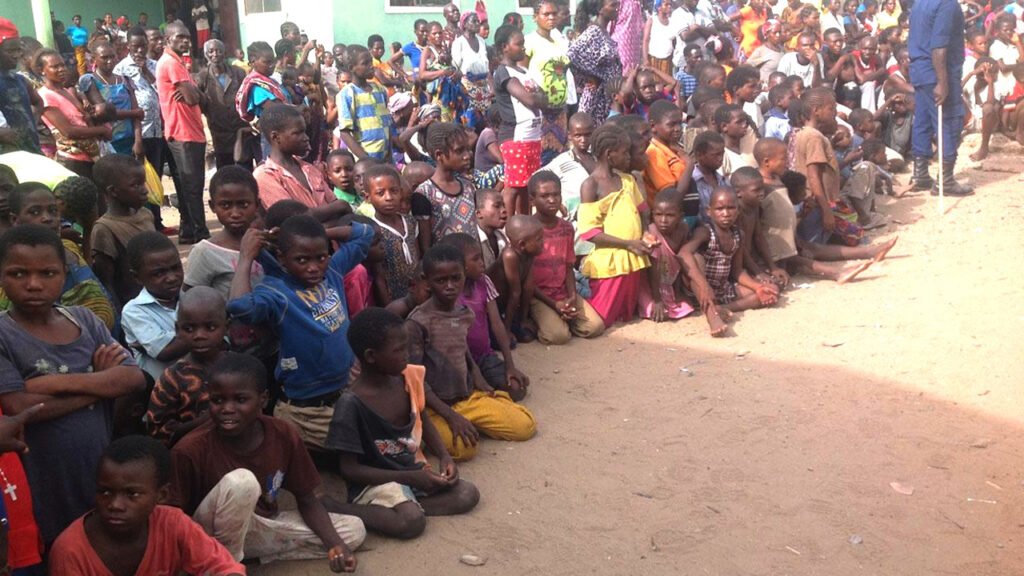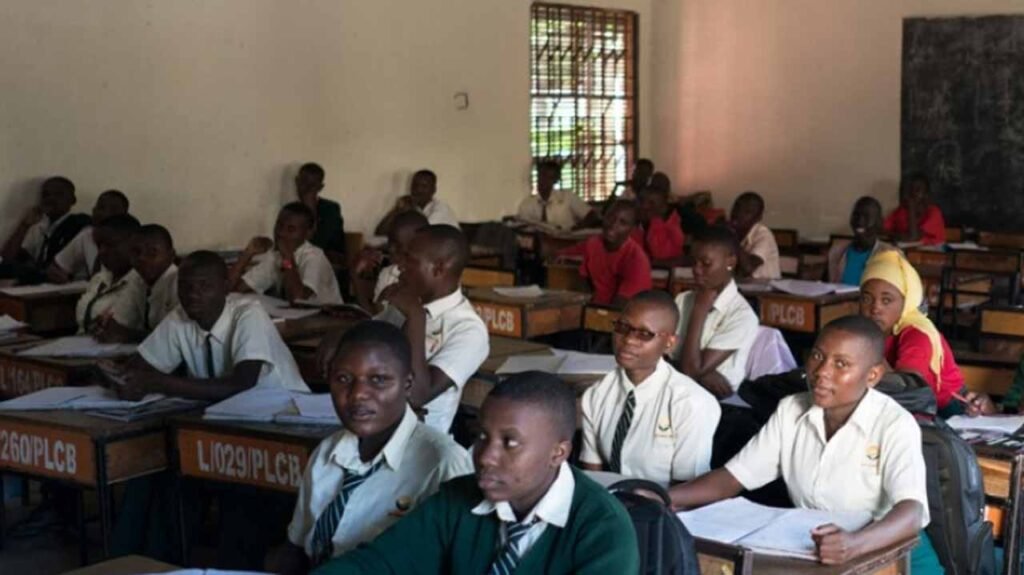Nigeria stands today amid a formidable educational reckoning. On one side lies a legacy of decline — staggering figures, crumbling infrastructure, inadequate funding, unsafe learning environments, and recurring governance lapses. On the other hand, scattered but inspiring experiments in reform and innovation offer glimmers of hope. The tension between systemic failure and localised ingenuity defines the narrative of Nigeria’s education crisis.
Table of Contents

Access, Equity and the Widening Divide
One cannot begin to understand the scope of the crisis without first confronting access. According to UNICEF, Nigeria has more out-of-school children than any other country; roughly 20.2 million children are not enrolled in school. That alarming statistic paints a portrait of exclusion at scale. (Source: original article)
Even where schooling is possible, access is deeply unequal. Poverty remains the most formidable barrier. Many families struggle to afford uniforms, textbooks or transportation. For those in remote or rural regions, physical access — poor roads, lack of transport, dilapidated school buildings — compounds the problem. In many places, basic infrastructure such as clean water, toilets, desks and lighting are missing, further discouraging attendance.
Cultural and societal factors intensify exclusion, especially in northern Nigeria. Systems such as the almajiri tradition, early marriage, and entrenched gender biases deprive girls and boys of quality schooling. In communities where supporting a large family often means children must work, the choice is between survival and schooling—and schooling frequently loses.
The result: an ever-widening educational chasm between urban and rural, rich and poor, and between states that invest more and those that barely keep up. If Nigeria truly hopes to transform its youthful demographic into a national “dividend,” it must contest educational exclusion head on.
Quality, Teachers and Curriculum: Where the System Buckles
Access without quality is hollow. Many students who attend school receive little in return. The public school system is beset by overcrowded classrooms, teacher shortages, and an outdated curriculum. According to UNESCO data, the average student-to-teacher ratio in some public primary schools is as high as 53 to 1—a strain on both teachers and learners. (Source: original article)
Teachers themselves are often undervalued, underpaid, demotivated, and undertrained. Many enter the profession not out of passion, but due to lack of alternative employment. Without effective professional development, ongoing mentorship, or incentives, low morale and poor instructional quality are pervasive.
The curriculum compounds the challenge. Much of Nigeria’s academic content remains antiquated, heavily theoretical and disconnected from the demands of a rapidly evolving labour market. Graduates, even with degrees, often lack digital skills, critical thinking, entrepreneurship, or readiness for modern-day industry needs. Meanwhile, language policies (especially with regard to instruction in local languages or use of English) are inconsistently applied across regions, producing confusion and gaps in comprehension.
These defects create a “learning gap” — where students progress through the system without mastering foundational skills in literacy, numeracy, science, or socio-emotional ability. The global comparisons are stark: Nigeria’s youth literacy and numeracy rates remain well below international benchmarks.
Security is another corrosive factor. In Nigeria’s north-east and other conflict-prone zones, insurgency, banditry, and community clashes have destroyed schools, forced closures, and traumatised teachers and pupils. Between 2014 and 2022, more than 1,600 students were abducted during such violence. (Source: original article) In other regions, kidnappings, riots or armed conflict regularly disrupt schooling.
Underlying all these structural and operational failures is corruption and weak governance. Funds allocated for education are often misallocated — inflated contract costs, ghost schools, diversion of pedagogical materials, and delayed teacher payments — all decimate the system from within. Even if the government were to sharply increase budgetary allocations, systemic mismanagement would blunt its impact.

Innovation Amid Crisis: Seeds of a New Paradigm
Yet within the bleak landscape, a few bright spots are emerging. These localized initiatives prove that with creativity, accountability, and community engagement, change is possible—even if currently limited in scale.
For example, SKOT Impact Academy combines blended learning with entrepreneurship curricula, aiming to produce learners who are both academically competent and job-ready. This hybrid model marries traditional classroom instruction with digital content and mentorship, bridging some gaps that the formal system cannot. (Source: original article)
Similarly, GiveBackGroup tackles access challenges head-on. It provides scholarships, mentorship, and community-driven learning platforms that reach disadvantaged children excluded from the conventional system. Its approach is grassroots, working with families and local leaders to reduce barriers to schooling. (Source: original article)
Meanwhile, KEY Academy focuses on early childhood education—an often-overlooked stage. By emphasising creativity, leadership skills and critical thinking from the outset, it challenges the notion that quality must start only at the middle levels. (Source: original article)
These “pockets of innovation” may be modest in size today, but they offer templates for systemic change. They underscore three critical principles:
- Local adaptability — models tailored to community resources, languages and realities tend to be more sustainable.
- Partnerships across sectors — government, NGOs, private sector, and community bodies working together can create leverage.
- Scalable frameworks — while a pilot programme may reach dozens or hundreds, the methods and processes should be designed for scaling to thousands.
If national policymakers adopt policies that nurture, finance, replicate and regulate such models, the “innovative islands” can gradually form a broader ecosystem of renewed education.
The Road Ahead: Reform, Renewal and Collaboration
What will it take to bring about wide-scale transformation? The path forward is arduous, but not impossible—provided Nigeria applies bold will, smart design and sustained leadership.
1. Increase funding substantively, and ensure accountability.
Nigeria’s 2024 education allocation — just 6.39 percent of the federal budget — is far below UNESCO’s recommended 15–20 percent benchmark. (Source: original article) What matters even more, however, is that those funds reach schools, teachers, and learners, rather than being siphoned off or absorbed by bureaucracy. Transparent procurement systems, public auditing, and community oversight are non-negotiable.
2. Overhaul teacher policy.
Recruitment, training, remuneration, continuous development and performance accountability must be addressed as a unified whole. Good pay alone will not sustain quality teaching; respect, professional development, recognition and pathways for career growth are equally important. A revitalised, motivated corps of teachers lies at the heart of any educational revival.
3. Revise the curriculum for tomorrow.
Curricula must be updated to prioritise digital literacy, critical thinking, entrepreneurship, life skills, and relevant vocational capacities. Theory must be balanced with applied learning. Language of instruction policies must be coherent and context-sensitive so learners are neither alienated nor linguistically constrained. Assessment regimes, too, should reward innovation and problem solving, not rote recall.
4. Strengthen school security and resilience.
Educational institutions must become safer and more resilient to conflict, climate stress, and instability. That means investing in secure infrastructure, contingency plans, psychosocial support, and early warning systems in vulnerable zones. For many children displaced by violence, having safe access to schooling is a lifeline.
5. Foster ecosystem partnerships.
No government, however well-intentioned, can carry the burden alone. Civil society organisations, private-sector edtech firms, philanthropic bodies, and communities must be invited into the design, delivery and monitoring of educational programs. Collaboration across sectors can stretch resources, drive innovation, and ensure relevance.
6. Prioritise scaling of successful models.
Policy should not merely treat innovations as curiosities, but as possible templates for national uptake. Provide grants, subsidies or matching funds for proven pilots; create regulatory “innovation zones” where new models can operate with flexibility; and build mechanisms for replicating what works across states and local government areas.

Conclusion: Between Decline and Hope
Nigeria’s education system is, in many respects, in crisis. A structural decline in funding, pervasive inequality, systemic corruption, poor quality instruction, outdated curricula, and security challenges have left millions behind. Yet to dismiss the entire landscape as hopeless is to ignore the spark of creativity that continues to glow in unexpected places.
The effort now should be to shift from isolated glimmers of success to systemic transformation. That requires political courage, strategic investment, rigorous accountability, and cross-sector collaboration. If Nigeria continues to treat education as an afterthought, it risks condemning its vast youth population to a future of unfulfilled potential, unemployment and disenfranchisement.
But if it treats education as the foundation of national renewal — funding it properly, protecting it fiercely, and innovating within it boldly — the country may yet turn the tide. Nigeria’s youth offer an unmatched resource. The question is whether the nation can summon the will to match them with opportunity.
Join Our Social Media Channels:
WhatsApp: NaijaEyes
Facebook: NaijaEyes
Twitter: NaijaEyes
Instagram: NaijaEyes
TikTok: NaijaEyes
READ THE LATEST EDUCATION NEWS





